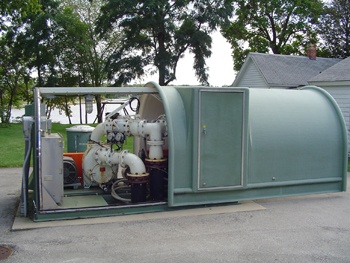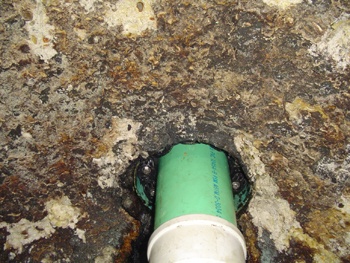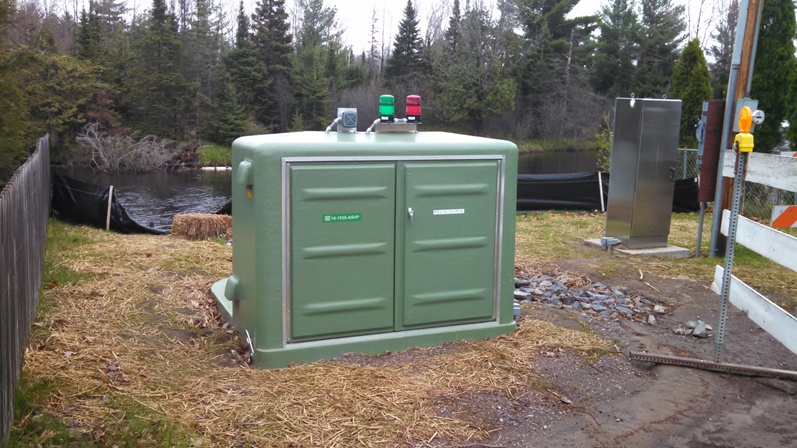 For the third time this month you’re going out to unplug that same pump at that same lift station. It’s getting pretty old. Not only is it getting old, it’s getting expensive. Each time you head out there to clear the plug, you’re burning fuel, and a lot of time that could be better spent elsewhere. If this scenario sounds all too familiar, it may be time to do something about it.
For the third time this month you’re going out to unplug that same pump at that same lift station. It’s getting pretty old. Not only is it getting old, it’s getting expensive. Each time you head out there to clear the plug, you’re burning fuel, and a lot of time that could be better spent elsewhere. If this scenario sounds all too familiar, it may be time to do something about it.
According to the wastewater experts on our municipal team, these are the signs you should watch for:
- PLUGGED PUMPS
If pumps are continuously plugging in your lift station, it’s likely because wastewater has changed in composition since the pumps were first put into place. Rags, sanitary products and other items simply can’t pass through older style impellers. Today’s impellers have features designed to handle these types of solids. Recessed vortex design, single vane impellers, or non-clog open impellers are just some of the new options available.
 LONGER RUNTIMES
LONGER RUNTIMES
If it seems like the pumps never stop running, it could be because they’re pretty worn out. Over time, clearances open up, impellers wear, and the casings do too. When this happens pumps become hydraulically less efficient, and generate less flow.
This causes another problem in the force main. If your pumps are generating less flow, they may not be generating the proper scouring velocities, causing solids deposition, or settling, in the force main, increasing the inefficiencies of the pumps.
- NO ELECTRICAL DRAWINGS
Since your lift station was installed there have been changes in personnel and original records have been forgotten or lost. If this has happened, it’s likely that the electrical panel has old style relays and level controllers, and even more likely that the panel may no longer be up to code anymore.
- TRIPPED CIRCUIT BREAKERS OR BLOWN FUSES
This could be happening for a few reasons.
- Old starters (magnetic contacters)
- Pumps may have water in the motors because mechanical seals have leaked
- Electrical service has been upgraded from 240 volts to 208 volts which causes higher amp draws, causing the overloads to trip on the starters
 SOFT OR CRACKING CONCRETE
SOFT OR CRACKING CONCRETE
In lift station environments, concrete breaks down pretty fast (relatively speaking). As wastewater professionals know, many times there is a floating bog of grease and rags in the wet wells that creates hydrogen sulfide gas. The mixture H2S and oxygen creates sulfuric acid that breaks down the pump rail systems and the concrete surround. To minimize this, wet wells need to be frequently pumped out clean, or have a submersible mixer installed to homogenize the wastewater, making it easier to pass through the pumps. This improves odors, reduces buildup of gases and helps keep the pumps from clogging.
 RUSTY VALVES
RUSTY VALVES
If the valves in the lift station are rusty on the outside, chances are the internals are too. Leaking or clogged check valves can cause increased run times on the pumps and decreased flow by recycling the wastewater back to the wetwell.
- BELOW GROUND (CAN TYPE) LIFT STATIONS
If you have a can style lift station, it’s time to take a hard look at the value it provides. Having pumps, a control panel, and valves below grade is dangerous for municipal workers and poses a serious risk of injury or even death. Options exist to change to above ground valve vault and submersible lift station.
If your lift station exhibits one or more of these signs, consider rehabilitating it. Your lift station will be safer and more efficient, and so will you and your operators.
Time for a lift station rehabilitation? Ask us about it! We gladly provide technical assistance to businesses and municipalities in Wisconsin and upper Michigan.


 For the third time this month you’re going out to unplug that same pump at that same lift station. It’s getting pretty old. Not only is it getting old, it’s getting expensive. Each time you head out there to clear the plug, you’re burning fuel, and a lot of time that could be better spent elsewhere. If this scenario sounds all too familiar, it may be time to do something about it.
For the third time this month you’re going out to unplug that same pump at that same lift station. It’s getting pretty old. Not only is it getting old, it’s getting expensive. Each time you head out there to clear the plug, you’re burning fuel, and a lot of time that could be better spent elsewhere. If this scenario sounds all too familiar, it may be time to do something about it. LONGER RUNTIMES
LONGER RUNTIMES SOFT OR CRACKING CONCRETE
SOFT OR CRACKING CONCRETE RUSTY VALVES
RUSTY VALVES